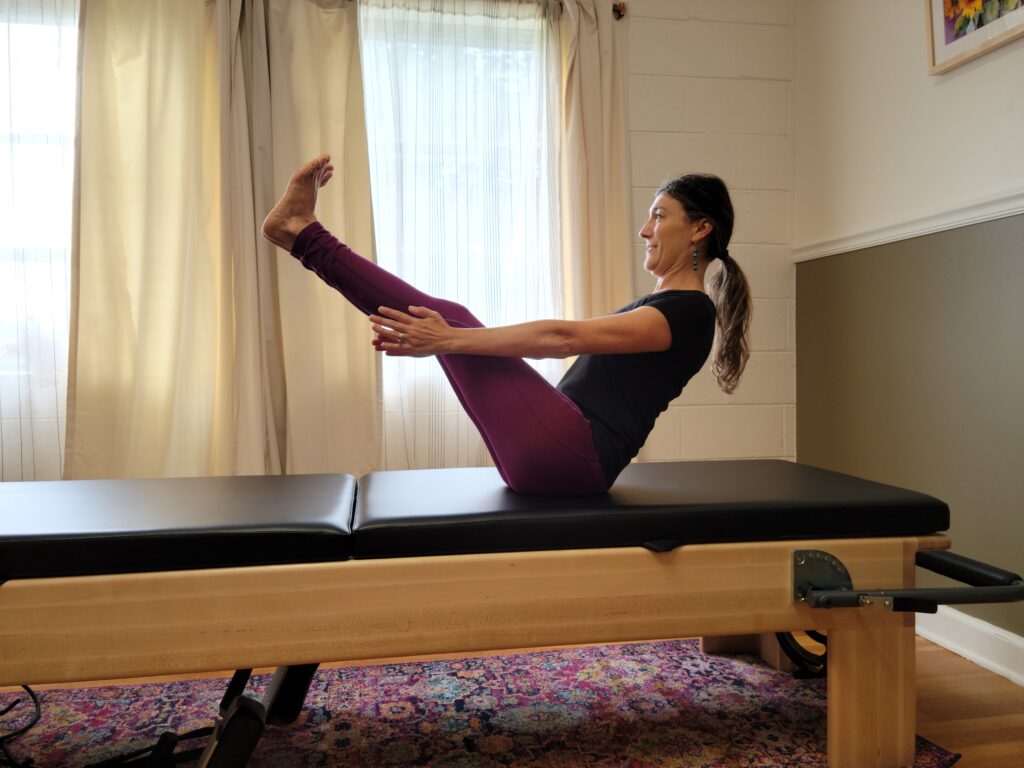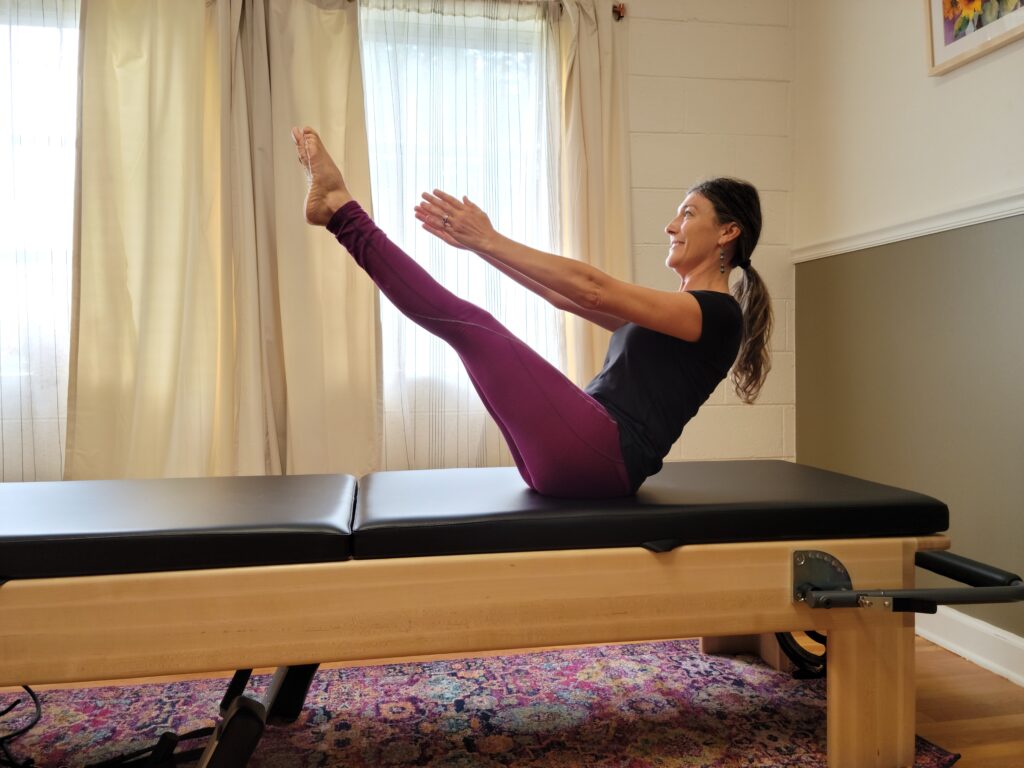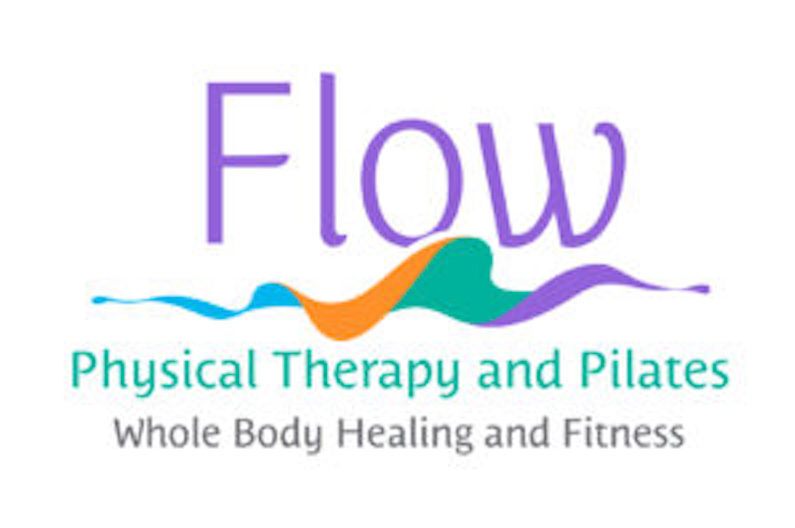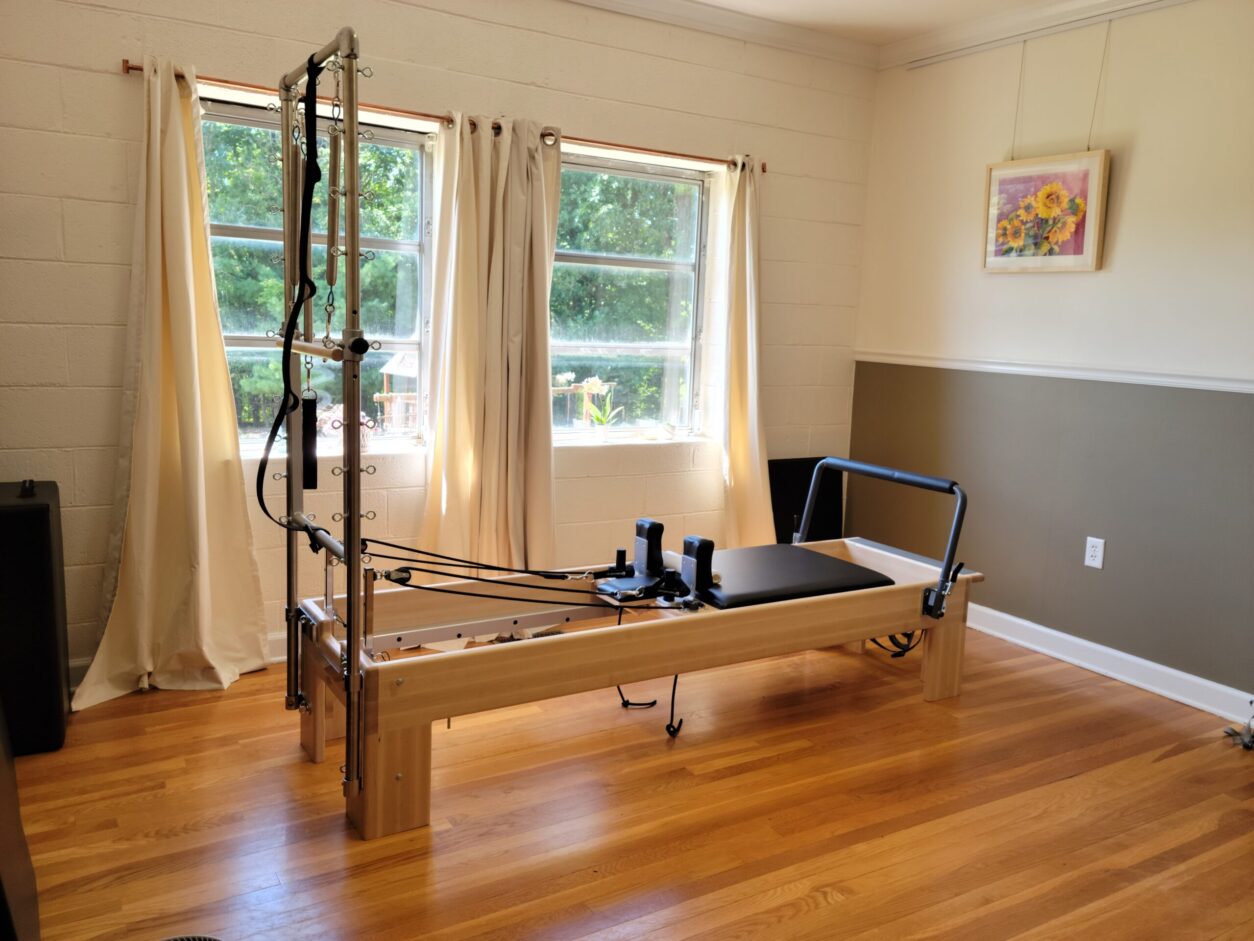The above is a question I have heard since starting Pilates in 2009. I also hear “Oh, it’s those exercises on a mat,” or “Doesn’t it use those weird machines”. The answer to those questions is “Sort of”.
The Origin
Pilates is a form of exercise named after its founder Joseph Pilates. He originally called it Contrology. As the story goes, Joseph was a fairly unhealthy child which caused him to devote his life to improving his body and his fitness. Eventually, he became a fitness enthusiast with experience in gymnastics, martial arts, bodybuilding, boxing, and yoga.
During World War I, the British interned Joseph due to his German citizenship. During internment, he developed his original mat exercises. As a result of his success at leading fellow detainees in exercises, he became an orderly at a hospital on the Isle of Man . The hospital work led to the original idea of the piece of equipment known as the reformer, which is essentially a frame, a surface to lay on, and springs as resistance.
After WWI, he returned to Germany to further progress his exercise repertoire. Around 1925, Joseph left Germany on a ship to the United States, where he met his wife Clara who was a nurse.
Joe taught his “Contrology” to Clara. In 1926, they opened the first studio in New York City; this happened to be in the same building as the New York City Ballet. Later, he taught his exercises to a small group of people who continued his work and went on to teach others.
So Really, What is Pilates?
Pilates is a series of exercises that combine mobility, alignment, flexibility, strength, core stability, and breathing into the exercises. The purpose is to cultivate a whole body approach to fitness. The different aspects of the exercises create a good balance for a healthier body by mimicking the ways these different components act together during every day movements.
At its most basic, Pilates is a routine of exercises done on a mat. The equipment and the corresponding exercises can also be utilized, but aren’t necessary. The list of equipment is: the reformer (the most common), the trapeze table (AKA the cadillac), the chair (originally converted to an actual chair), the barrel, and the ring.
Pilates does have exercises that are similar to those found in yoga, dance, and even boxing, though their execution is different. As mentioned earlier, Joseph created “Contrology” from drawing upon his other exercise forms. So, Joseph Pilates was an original “sampler.”

Paripurna Navasana (Boat pose in Yoga) 
Pilates Teaser
What Are the Benefits of Pilates?
There are lots of ways Pilates can be beneficial. It can improve strength, core muscle activation, respiratory function, flexibility, joint motion, posture awareness, balance, and mental health. And cue the research (I’ll keep it short and painless)!
Pilates is for all ages, but provides a good, low joint impact exercise routine for the aging adult. Mat Pilates improves balance (1), which decreases the risk of falls that can be devastating for the aging population. It can increase core muscle strength, which supports the ease of completing daily activities and decreases fall risk (2). A 2010 study found that Pilates improved autonomy, balance, and quality of life (3). In another study of adults over 65 years old, significant improvements in balance, flexibility, strength, and reaction time were found using Pilates (4).
Pilates can be beneficial for women’s health. It can decrease postpartum maternal fatigue (5). It is able to decrease pain during pregnancy (6). Eight weeks of prenatal Pilates decreased the incidence of Cesarean section, episiotomies, and pain during labor (7). It is effective at reducing urinary incontinence (8). Pain and functional status improved using Pilates in postmenopausal women with osteoporosis (9). A study of women in 2011 found that 12 weeks of Pilates decreased depression while improving heart and blood pressure rates, muscle endurance, strength, and flexibility (10).
Pilates is not just for women. In a study that included women and men ages 25-65, the mixed gender groups showed “statistically significant increases in abdominal endurance, hamstring flexibility, and upper-body muscular endurance” (11). It has also been shown to increase the immune function in men (12). It is able to decrease pain for men with rheumatoid arthritis (13); this is a group of people with a diagnosis that can drastically limit the exercises that are tolerated.
Pilates can improve posture. Improved posture means that joints line up more optimally, thereby decreasing stress on joints, muscles, and ligaments. Decreased prolonged stress means less chance for injury. In a 2016 study focused on forward head posture (think chin poking foward), Pilates was successful at significantly reducing this poor posture, improving neck motion, and decreasing neck pain (14). In an observational study, improved posture was measured using video analysis after 12 sessions of weekly Pilates (15). Another study showed improved degree of lordosis for 15-18 year old females after 8 weeks of Pilates (16).
I think you get the picture without me spewing more research at you. Due its whole body approach, it can impact various aspects of health and a wide range of individuals.
Is All Pilates the Same?
In short, no. As was mentioned before, Joseph Pilates taught his works to a small group of people that were his clients. Those original people went on to teach others. And so on and so forth. This is why you will see some instructors emphasize who they trained with or how many steps removed they are from the original teachers. It’s like the Six Degrees of Kevin Bacon, but for Pilates.
There is a portion of Pilates termed “classical,” meant to indicate the exercises are as close to the original teachings of Joseph Pilates as possible. However, he supposedly curtailed his exercises to the needs of each individual. Thus, modification of some exercises might have been made for one person and not another. In essence, his original group may have learned some exercises slightly different from each other. The original exercises are also from the early 1900’s. Knowledge on the human body and exercise science have improved vastly from that time to be more safe, appropriate, and effective; so, let’s hope the exercises aren’t exactly like the original. (Spoiler alert: some of them are not.)
Programs can differ in their intent. As mentioned before, classical Pilates tends to be more about original exercises, and may or may not teach exercise modifications. Some programs focus strictly on fitness. Some focus on Pilates for rehabilitation, which can be heavy into modifications but might miss some of the more advanced exercises. Other programs combine fitness and rehabilitation.
There are different ways people learn Pilates. Some programs require attendance of multiple courses that each span 2-3 days. Some occur over one weekend, like a crash course in Pilates. I’ve even heard of people “training” through online videos. Some programs require completion of in-person observation, teaching, and personal session hours. Being able to instruct a client in Pilates is not very regulated.
One aspect of Pilates is controlled. The Pilates Method Alliance is a group that began in 2001 with Pilates professionals to try to legitimize the teaching. Verified completion of a comprehensive training program of 450 hours or more on specified equipment, passing a standardized test, and paying a fee allow an instructor to become “PMA certified.” These are the only instructors legally allowed to advertise that they are “certified in Pilates.”
So, the take home on this is to know your instructor’s background. Ask if they modify the exercises. Ask what training your instructor has had.
The Wrap Up
In summary, Joseph Pilates created his exercise form over 100 years ago. It combines posture, breathing, strengthening, flexibility, strength, and core muscle activation to achieve whole body fitness. People of any age, gender, and with varying physical needs benefit from Pilates. Modifying exercises properly creates safe exercise. When taught by an experienced instructor, Pilates can positively impact your health.
I truly hope you give it a try!
References Cited
- Hyun, J., Hwangbo, K., & Lee, C.-W. (2014). The effects of pilates mat exercise on the balance ability of elderly females. Journal of Physical Therapy Science, 26(2), 291–293. https://doi.org/10.1589/jpts.26.291 J Phys Ther Sci. 2014 Feb; 26(2): 291–293
- Granacher, U., Gollhofer, A., Hortobágyi, T., Kressig, R. W., & Muehlbauer, T. (2013). The importance of trunk muscle strength for balance, functional performance, and fall prevention in seniors: A systematic review. Sports Medicine, 43(7), 627–641. https://doi.org/10.1007/s40279-013-0041-1 Sports Med. 2013 Jul;43(7):627-41
- Siqueira Rodrigues, B. G., Ali Cader, S., Bento Torres, N. V., Oliveira, E. M., & Martin Dantas, E. H. (2010). Pilates method in personal autonomy, static balance and quality of life of elderly females. Journal of Bodywork and Movement Therapies, 14(2), 195–202. https://doi.org/10.1016/j.jbmt.2009.12.005
- Gonul Babayigit Irez, Recep Ali Ozdemir, Ruya Evin, Salih Gokhan Irez, Feza Korkusuz. 2011). Integrating Pilates Exercise into an Exercise Program for 65+ Year-Old Women to Reduce Falls Journal of Sports Science & Medicine. 10(1), 105–111. Published online 2011 Mar 1.
- Ashrafinia, F., Mirmohammadali, M., Rajabi, H., Kazemnejad, A., Sadeghniiat Haghighi, K., & Amelvalizadeh, M. (2015). Effect of pilates exercises on postpartum maternal fatigue. Singapore Medical Journal, 56(03), 169–173. https://doi.org/10.11622/smedj.2015042
- Oktaviani, I. (2018). Pilates workouts can reduce pain in pregnant women. Complementary Therapies in Clinical Practice, 31, 349–351. https://doi.org/10.1016/j.ctcp.2017.11.007
- Rodríguez-Díaz, L., Ruiz-Frutos, C., Vázquez-Lara, J. M., Ramírez-Rodrigo, J., Villaverde-Gutiérrez, C., & Torres-Luque, G. (2017). Effectiveness of a physical activity programme based on The pilates method in pregnancy and labour. Enfermería Clínica (English Edition), 27(5), 271–277. https://doi.org/10.1016/j.enfcle.2017.05.007
- Lausen, A., Marsland, L., Head, S., Jackson, J., & Lausen, B. (2018). Modified pilates as an adjunct to standard physiotherapy care for urinary incontinence: A mixed methods pilot for a randomised controlled trial. BMC Women’s Health, 18(1). https://doi.org/10.1186/s12905-017-0503-y
- Küçükçakır, N., Altan, L., & Korkmaz, N. (2013). Effects of pilates exercises on pain, functional status and quality of life in women with postmenopausal osteoporosis. Journal of Bodywork and Movement Therapies, 17(2), 204–211. https://doi.org/10.1016/j.jbmt.2012.07.003
- Hassan, E. A., & Amin, M. A. (2011). Pilates Exercises Influence on the Serotonin Hormone, Some Physical Variables and the Depression Degree in Battered WomenWorld Journal of Sports Sciences, 5(2), 89–100. https://www.pilatesfisios.it/ricerche%20pdf/Pilates%20Exercises%20Influence%20on%20the%20Serotonin%20Hormone,.pdf.
- Kloubec, J. A. (2010). Pilates for improvement of Muscle Endurance, flexibility, balance, and posture. Journal of Strength and Conditioning Research, 24(3), 661–667. https://doi.org/10.1519/jsc.0b013e3181c277a6
- Bahram, M. E., Siahkohian, M., Bolboli, L., & Pourvaghar, M. J. (2020). The effect of 8 weeks Pilates training on depression treatment on retired work men. Journal of Health Promotion Management, 9(2), 56–66. http://jhpm.ir/article-1-1102-en.html.
- Khalili, M., Golpayegani, M., & Shahrjerdi, S. (2014). Journal of Research Sport Rehabilitation, 2(4), 41–52. https://www.sid.ir/en/Journal/ViewPaper.aspx?ID=445479.
- Lee, S.-M., Lee, C.-H., O’Sullivan, D., Jung, J.-H., & Park, J.-J. (2016). Clinical effectiveness of a pilates treatment for forward head posture. Journal of Physical Therapy Science, 28(7), 2009–2013. https://doi.org/10.1589/jpts.28.2009
- Gille, O., Challier, V., Parent, H., Cavagna, R., Poignard, A., Faline, A., Fuentes, S., Ricart, O., Ferrero, E., & Ould Slimane, M. (2014). Degenerative lumbar spondylolisthesis. cohort of 670 patients, and proposal of a new classification. Orthopaedics & Traumatology: Surgery & Research, 100(6). https://doi.org/10.1016/j.otsr.2014.07.006
- Samira, M. S., & Laleh, B. (2015). Biological Forum, 7(1), 1267–1271. https://www.researchtrend.net/bfij/bf12/199%20BEHBUDI%20LALEH.pdf.

